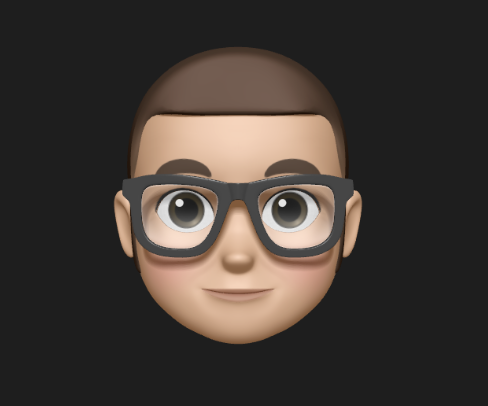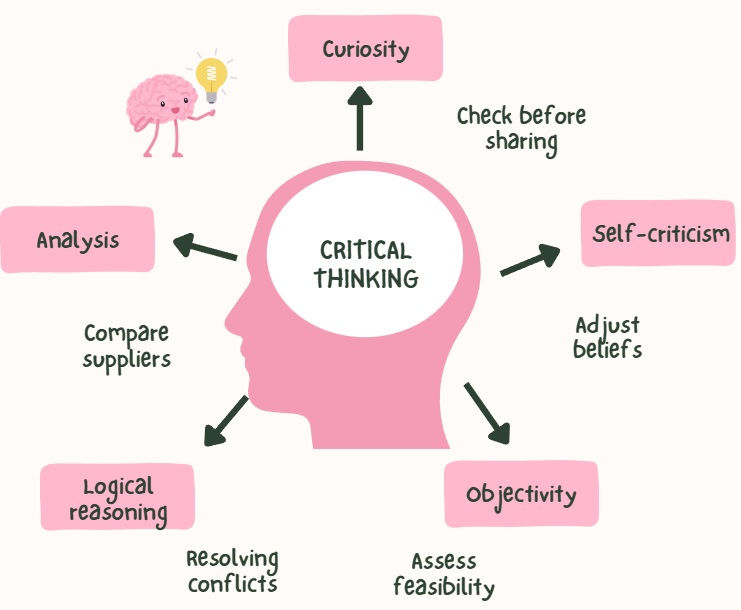 Freelancer tips
Freelancer tips Problem-solving strategies: Steps and examples
Using problem-solving strategies is key to increasing the chances of achieving better results. These are the most useful ones.



Critical thinking is the ability we have to analyze and question arguments before accepting something as true.
In modern work, it’s an essential skill to filter out noise instead of acting on impulse or assumptions. This way, you can analyze different scenarios, anticipate risks, choose stronger alternatives, and justify each decision more clearly to your team or clients.
At DolarApp, it’s key for analyzing risks, designing secure products, and building trust. That’s why, in this article, we’ll look at what critical thinking is, its characteristics, and how to develop it.
It’s the ability to analyze, question, and evaluate ideas, information, and arguments before making a decision or assuming them to be true. This involves reviewing data, considering different perspectives, and asking whether the conclusions truly hold up.
The concept of critical thinking originated about 2,500 years ago in classical Greek philosophy. More precisely, with Socrates’ approach of asking uncomfortable questions and not accepting anything just because “that’s how it’s always been done.”
Over time, authors like John Dewey helped consolidate the term in modern education as a competency that can be taught, practiced, and improved.
Logical thinking is based on rational analysis and governed by formal rules, whereas critical thinking goes a step further. While it incorporates logic, the latter helps us decide better what is worth thinking, believing, or doing.
Suppose you see an ad that says, “This supplement really works—thousands of people already use it.”
Logical thinking tells you: “If thousands of people use it, then it must be good.” Critical thinking asks, “Who says it’s thousands? Who made them use it? Are there studies that prove it?”
One connects ideas, and the other questions information before accepting it.
Critical thinking is defined by a set of attitudes and mental processes that work at the same time.
These are the most important:

Curiosity. It’s the engine that drives all critical-thinking skills. Curiosity pushes you to ask questions, compare sources, and seek deeper explanations before accepting an idea.
Objectivity. It evaluates information with neutrality, avoiding impulsive judgments and distinguishing between verifiable facts and personal opinions.
Analysis. It enables precise decision-making by breaking complex problems into simpler parts. This allows you to understand their origin, causes, and possible solutions.
Logical reasoning. It connects ideas coherently and detects inconsistencies or weak arguments. Thanks to this reasoning, conclusions are based on evidence, not assumptions.
Self-criticism. It allows you to recognize your own mistakes, adjust beliefs, and learn from experience, fostering an open and adaptable mindset.
The mind is trained daily by practicing these critical-thinking skills. As a result, you can reason more clearly, make wiser decisions, and learn from every experience.
Critical thinking is an essential competence in everyday life, in studies, and in professional settings. It’s also one of the most valued in modern work, as it enables sound decision-making and professional growth.
However, its importance lies in several aspects:
It facilitates evidence-based decision-making.
By fostering the search for new and viable solutions to complex problems, it stimulates creativity.
It supports effective communication and teamwork, since it drives the exchange of ideas with solid arguments.
It promotes innovation in companies and sectors where evaluating information is fundamental to progress.
By maintaining an open attitude toward change and constant analysis of results, it reinforces continuous learning and self-criticism.
Overall, critical thinking is a necessary skill to analyze, create, and decide with balance and purpose.
Critical thinking shows up in concrete day-to-day decisions.
Below are four different situations:
When evaluating information before sharing it on social media. As a critical person, you first review who wrote it, analyze credibility, and check whether other outlets confirm it. If something doesn’t convince you, you don’t share it.
When analyzing a project’s viability. It applies when you review risks, numbers, and time to return instead of investing based only on emotion or promises.
When comparing providers or tools. Before hiring a service, you compare prices, features, and other users’ opinions. In this case, you choose the option that offers more value, not just the cheapest.
When solving work problems. When you know how to manage conflicts—listening to all sides, reviewing what happened, and proposing a fact-based solution—critical thinking is at work.
With critical-thinking skills, people tend to make sound decisions in any setting.
But if you think you don’t have this skill, don’t worry—there are simple ways to develop it…
Like many soft and hard skills, critical thinking can be trained through daily habits:
Read and compare sources. Before taking something as true, look into multiple sources, check who wrote it, the date, and whether there’s data to back it up.
Ask questions. Asking helps you spot assumptions, information gaps, and points that need more analysis. So don’t settle for the first explanation—question the causes, steps, and evidence behind each claim.
Listen to different opinions. Seek viewpoints different from your own and practice active listening. This minimizes biases, adds new information, and forces you to review whether your conclusions hold up.
Evaluate consequences before acting. Don’t decide without first thinking about what could happen in the short and long term, what risks exist, and who might be affected.
You can apply these habits both at work and in daily life. But if it’s a bit hard for you to focus or calmly analyze information, you could try practicing deep work. It will help you think without distractions.
Either way, you can train your critical thinking little by little until it becomes part of your routine.
Critical thinking isn’t “thinking more,” but thinking with discernment and relying on evidence. In an environment full of information, opinions, and constant change, it’s a key tool for continued personal and professional growth.
Training it allows you to make more informed decisions and solve problems more clearly.
Also, developing critical thinking requires putting into practice habits you can implement gradually. Remember, it gets stronger every time you analyze information, ask questions, listen to other perspectives, and review your own conclusions.
At DolarApp this skill is essential to deliver a more trustworthy experience. Every decision pushes us to optimize the app so you can operate with digital dollars and euros without setbacks.
We also work to offer you a transparent and competitive exchange rate for converting USDc and EURc.
It’s the ability to analyze information objectively before making decisions. It’s important because it helps avoid biases, solve problems better, and make more informed decisions—especially in complex work environments.
Curiosity and objectivity to dig deeper and evaluate information. It also includes analysis, reasoning, and self-criticism, which help you understand better, detect inconsistencies, and improve the quality of decisions.
You can apply it by evaluating data before acting, analyzing alternatives, asking key questions, and validating information. Questioning processes, anticipating risks, and proposing more efficient solutions are also useful ways to apply critical thinking.
Common examples include analyzing options before choosing a strategy, evaluating the truthfulness of a news story, or deciding which internet service suits you best. Likewise, identifying failures in a work process or questioning ambiguous information.
Sources:

Os países têm fronteiras. Suas finanças, não mais.
 Freelancer tips
Freelancer tips Using problem-solving strategies is key to increasing the chances of achieving better results. These are the most useful ones.

 Freelancer tips
Freelancer tips Discover what efficiency and effectiveness are and how knowing the differences will boost your productivity in business—and even at a personal level.

 Freelancer tips
Freelancer tips Designing a solid training plan reduces errors and helps teams work with greater clarity. Here are the 5 stages to build one effectively.


